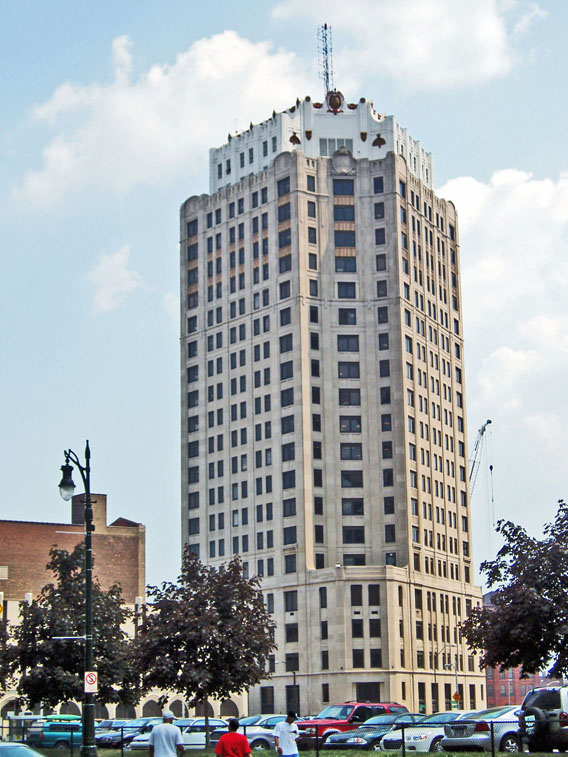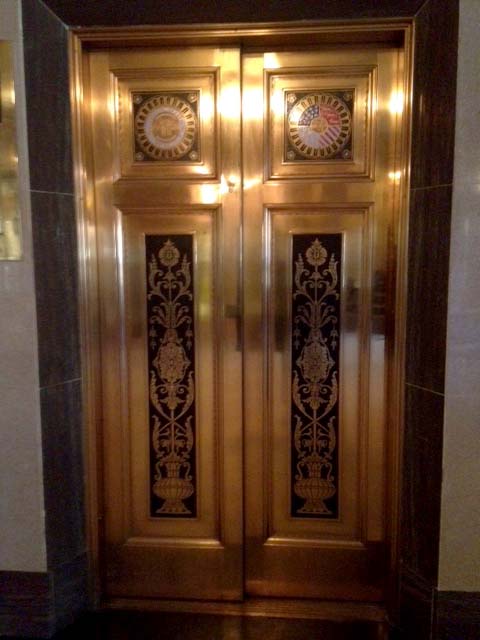
Water Board Building
735 Randolph in downtown Detroit
Providing water was among the most important
duties of civic officials as small villages grew into major cities in the
Nineteenth Century. In Detroit,
wells and the river were used until about 1827 when the city began to assume
responsibility for providing water. Water-borne contagious diseases killed
many residents early in that century. The development of a clean water system
and a sewage system made cities such as Detroit much healthier places. By 1854, a five-member board supervised the city’s water and
sewage system. Quite a few of the city’s more prestigious men served
on this board in the Nineteenth Century because of its importance. It is almost impossible to overestimate the importance of sewer and water system in reducing contageous diseases in American cities.
In the Nineteenth century, fires frequently broke
out and destroyed many homes and numerous factories. Building were constructed of
wood and most homes and factories
were heated by coal or wood stoves, so fire was an ever-present danger. Since
many wooden buildings were next to one another, a small fire could easily
spread and destroy a neighborhood. The entire village of Detroit burned in 1805. Fire department could put out
blazes only if high-pressure water were available throughout the city. In
the late Nineteenth Century, the City of Detroit developed a modern water
system, one that now serves the city and almost all suburbs throughout the
three-county metropolis. From the 1970s to the present, there has been frequent
political strife about control of the Detroit Water Board. State laws mandates
that the Water Board be supervised by a seven-person group. Four of these
are from the city of Detroit and one each from Macomb, Oakland and Wayne
counties. The suburban population is much larger and, from time to time,
suburban officials have alleged that the city overcharges for water. Control
of the water system is one of many issues that continue to generate vibrant
city-suburban conflict. The Detroit water and sewerage system is also a topic of concern in the city's bankrupcy filing in the summer of 2013.
be supervised by a seven-person group. Four of these
are from the city of Detroit and one each from Macomb, Oakland and Wayne
counties. The suburban population is much larger and, from time to time,
suburban officials have alleged that the city overcharges for water. Control
of the water system is one of many issues that continue to generate vibrant
city-suburban conflict. The Detroit water and sewerage system is also a topic of concern in the city's bankrupcy filing in the summer of 2013.
The building you see in the picture above continues to be among the more appealing skyscrapers found in downtown Detroit. The Water Board, in the mid-1920s, sought to build a major new office structure. The land available for them was a triangular shaped lot bounded by Randolph, Farmer and Bates. Louis Kemper—then one of the city most accomplished and popular architects—designed the 23-story, steel-framed skyscraper that you see. The Art Deco influences are clearly evident. Kemper designed a five-story base for this building, with an additional 15 stories of offices topped by a three story penthouse. He also designed an underground garage to provide parking for those who worked in this building. This is, I believe, one of the few Art Deco buildings designed by Louis Kemper. Its style differs greatly from that of some of the nearby buildings he designed in the same decade, including the Book Tower and the Book Cadillac Hotel. Originally, the Water Board occupied only the lower floors, with the higher levels used by other city departments but, since the 1990s, the Water Board has been the sole occupant.
Inside the banking room of this building, you will find an impressive mural painted by artists from the George Hamilton Thomas Studios. Neptune is, as expected, the central figure but the mural also shows four key figures in the city’s history: Antoine Cadillac, Colonel Jean Francois Hamtramck, Commodore Oliver Hazard Perry and Chief Tecumseh. Smaller paintings show the early history and development of the city’s water system.
Louis Kamper deserves honors for the significant contributions he made to Detroit's architect starting with the Colonel Hecker chateau on Woodward at East Ferry, through the many Washington Boulevard and Park Avenue buildings he designed in the 1920s. His portfolio also includes the very unusual Marvin Stanton Castle in the Barry Subdivision and the two classical French homes on East Jefferson at Indian Village, his own and the one he designed for his patron, James Burgess Book. As noted, Kamper worked in several different styles and, well into his sixties, was flexible enough to design the Art Deco building pictures above, one that looks fresh and interesting more than eighty years after Kamper finished his sketches and blue prints.
The website listed below contains a fascinating history of the water and sewage systems of Detroit dating back to the early French settlement.
Architect: Louis Kemper
Architectural style: Art Deco
Date of Construction: 1928
City of Detroit Local Historic District: Established August 23, 2002
State of Michigan Register of Historic Sites: Not listed
National Register of Historic Places: Not listed
Use in 2006: Offices of the Detroit Water and Sewerage Department
Website: www.dwsd.org/
Photograph of the exterior: Ren Farley
Photographs of the interior: Diane Scarpace; January, 2014
Description updated: January, 2014
Return to Commercial Buildings